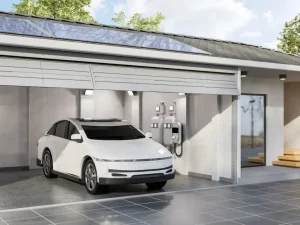Car-sharing platforms for rural and low-density areas

Picture this. You live in a place where the nearest grocery store is a 15-minute drive away. The bus? It comes by twice a day, if you’re lucky. Your car isn’t just a convenience; it’s a lifeline. But what happens when that lifeline is in the shop, or when a second car feels financially impossible? This is the daily reality for millions in rural and low-density areas.
For years, the revolutionary concept of car-sharing seemed like a strictly urban phenomenon. Zipcar for city dwellers. Lime scooters for downtown commuters. But the tide is turning. A new wave of innovation is finally bringing flexible, communal mobility to the countryside. And it’s about time.
Why rural areas are a different beast
You can’t just plop an urban car-sharing model into a small town and expect it to work. The challenges are fundamentally different. Distances are greater. Population density is lower. And, honestly, the trust networks operate differently. Everyone knows everyone.
The traditional “free-floating” model—where you pick up and drop off a car anywhere within a zone—is a non-starter. It just doesn’t make economic sense. Instead, successful rural platforms are adapting. They’re building models on what already exists: community.
The peer-to-peer revolution: borrowing from your neighbor
This is where things get interesting. The most promising model for these areas is peer-to-peer (P2P) car-sharing. Think of it as an Airbnb for cars. Local car owners can list their underused vehicles on a platform. Neighbors in need of wheels can then book them for a few hours, a day, or a week.
It’s a beautiful solution. The car owner makes some extra cash to offset their insurance and maintenance costs. The person who needs a car gets affordable, hyper-local access without the massive financial burden of ownership. It turns idle assets in driveways into a community resource.
Key benefits of the P2P model
- Economic sense: It creates a micro-economy, keeping money within the community.
- Reduces “car clutter”: Fewer families feel the need to own multiple vehicles.
- Builds trust: Transactions happen between people who might already know each other, or at least have mutual friends.
- Flexibility: The fleet isn’t limited to one type of vehicle. Need a truck for a haul? Someone’s probably got one listed.
Not without hurdles: the challenges to overcome
Sure, the idea is great. But making it work on the ground is another story. The biggest barrier? Insurance. Navigating personal vs. commercial insurance policies can be a nightmare. Thankfully, many modern P2P platforms now offer their own insurance packages that cover the owner and the borrower during the rental period. This is a game-changer.
Then there’s technology. Not every potential user in a low-density area has reliable high-speed internet or is a smartphone wizard. Platforms that offer simple booking via phone call or through a local library’s computer are seeing more success.
And let’s not forget the simple logistics of key exchange. In a city, you might use a lockbox. In a tight-knit town, dropping the keys off at the local post office or diner—a trusted central hub—often works better. It’s about adapting to the local rhythm.
The hybrid approach: blending community with formal services
Some of the most successful initiatives aren’t purely P2P. They’re hybrids. Imagine a non-profit organization or a local government acting as the anchor. They might provide a couple of core vehicles—a sedan and a van—stationed at a central location like a community center.
This formal fleet is then supplemented by a P2P network of private cars. This approach ensures there’s always a reliable option available, which builds initial trust and gets people used to the concept. It de-risks the whole idea for the community.
| Model Type | How It Works | Best For |
| Pure Peer-to-Peer (P2P) | Neighbors rent cars directly to each other via an app/platform. | Established communities with high trust levels. |
| Non-Profit / Co-operative | A local organization owns and manages a small fleet for members. | Towns looking for a structured, community-focused solution. |
| Public-Private Partnership | Local government partners with a tech platform to enable P2P sharing. | Areas seeking to reduce traffic and parking congestion officially. |
The future is connected (and electric?)
Looking ahead, the potential is huge. As these networks grow, they can integrate with other forms of mobility. Imagine booking a trip that involves a rideshare to a central hub, then picking up a shared car for the rest of your journey. It creates a seamless web of options.
And then there’s the electric vehicle (EV) question. Rural areas are often left out of the EV charging infrastructure conversation. But community car-sharing hubs could be the perfect place to install the first public EV chargers in a small town. A shared EV, used by multiple people, maximizes the use of that expensive asset and its charging point, making the economics more viable.
It’s more than just cars—it’s about connection
At its heart, successful car-sharing in low-density areas isn’t really about technology. It’s about strengthening community bonds. It’s about that moment when a young person can borrow a truck to get to a job interview, or an elderly resident can book a neighbor’s sedan for a doctor’s appointment without having to ask for a favor.
It returns a sense of autonomy and freedom. It provides a practical, modern solution woven from the oldest of fabrics: knowing your neighbor and sharing what you have. The open road shouldn’t be a symbol of isolation. With a little ingenuity and a lot of community spirit, it can once again be a path to connection.




